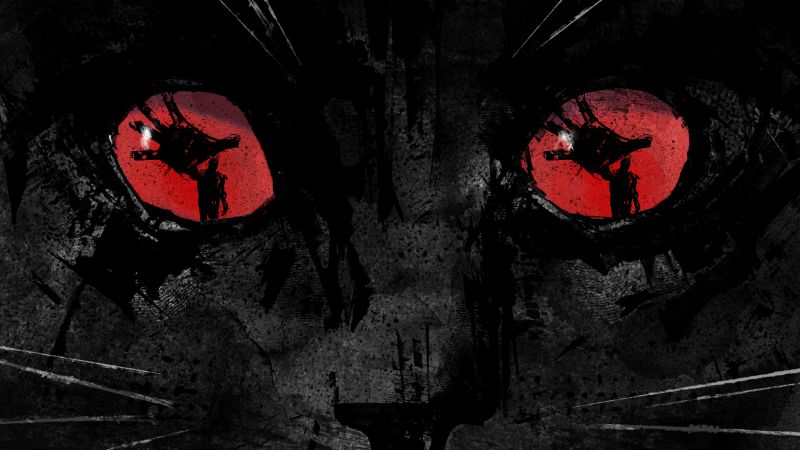Hidden Horrors: Inside the Global Network of Cat Torturers Exploiting Animal Suffering
Editor’s Note: This story contains graphic images and descriptions of violence.
CNN
In an alarming trend that has gained global attention, undercover activists like Chen, a pseudonym to protect his identity, are fighting against a disturbing network of individuals mutilating and killing cats for profit. From his bedroom in eastern China, Chen transforms into a digital detective, delving into a shadowy subculture that thrives on the internet.
The Dark World of Cat Torture Networks
In the past year, investigations by organizations like the Feline Guardians have unveiled an insidious world wherein individuals derive pleasure from animal cruelty—a phenomenon described by criminologists as “zoosadism.” These networks, predominantly based in China where animal cruelty is largely unpunished, have expanded their reach through platforms such as Telegram, X (formerly Twitter), and even YouTube.
Jenny Edwards, a criminologist specializing in animal sexual abuse, emphasized that this trend is more widespread than many realize. “It’s become a pretty international phenomenon,” she said.
Evidence shows that many of the perpetrators film their acts, creating gruesome videos that are shared globally, with some emerging from previously unknown abusers. The Feline Guardians recently reported a staggering 500% increase in cat torture videos in Chinese Telegram groups between June 2024 and February 2025, averaging a new upload every 2.5 hours.
Inside the Underground Networks
Activists who delve into these networks often report horrifying experiences. Chen and his fellow activists engage in a complex process of infiltrating chat groups that celebrate cat torture, trying to obtain enough information to expose the identities of the perpetrators.
- Brutal Content: The content of these videos horrifies viewers, showcasing cats subjected to inhumane and horrifying torture methods.
- The Roles Within the Communities: Inside these networks, the abusers are often referred to as “cat deleters” or “masters,” while their consumers are labeled as “sponsors.”
- Recruitment of New Members: Many of these abusers openly seek new recruits, even offering to show prospective members how to inflict harm on the animals.
This “dark web” of cat torture communities thrives on a culture that trivializes suffering and cultivates competition among members. Individuals compete to suggest new, more inventive methods of abuse, and the community often applauds the most shocking acts with disturbing reverence. This culture turns the act of watching animal pain into a twisted form of entertainment.
The Psychological Impact and Motivations
The motivations driving these individuals often stem from a complex mesh of psychological factors. Lara, a fellow activist based in London, voiced concerns about the stark reality of this subculture. Many members are described as socially isolated, finding connection through their shared perverse interests. “They’re becoming more elaborate with what they’re doing, and far more methodical,” she added. Studies suggest a psychological link between zoosadism and broader antisocial behaviors, indicating that this disturbing trend could lead to more severe acts of violence against humans.
As one member candidly revealed to CNN, “Watching these videos gives me much stronger pleasure than sex.” This alarming admission highlights the sexual fetishes that pervade this community, often echoing a deeper emotional trauma or psychological distress tied to their actions.
Global Efforts to Combat Animal Cruelty
Amidst the chilling landscape of cat torture networks, organizations like Feline Guardians are tirelessly working to expose these crimes and bring perpetrators to justice. Chen described the rising interest in fostering alliances among activists from different countries to confront this issue together. “There is a drive with not only being able to get the satisfaction of torturing horrifically cats, but also the feedback and the notoriety that they receive,” Lara explained, elucidating the twisted rewards this network offers participants.
Despite the overwhelming odds, grassroots organizations and activists continue to stage protests globally, advocating for better animal protection laws and greater attention to animal abuse issues. Social media platforms face increasing scrutiny for their role in allowing such content to flourish. However, many still struggle to enforce stringent regulations to combat these crimes.
As the number of pets in urban China surpasses 120 million, the pressure for better legislation to protect animals is mounting. The lack of comprehensive laws against animal cruelty in China allows this trend to flourish with little risk for the abusers.
The narrative of cat torture is not just one of horror; it is a cautionary tale about the dangers of unchecked cruelty. Without significant interventions and awareness, the continued rise of such networks poses a threat not only to animals but potentially to human society as well.
Ultimately, raising awareness, supporting animal rights groups, and pushing for legal reforms are essential steps toward dismantling these networks while safeguarding the future of not just our feline friends but humanity itself.






